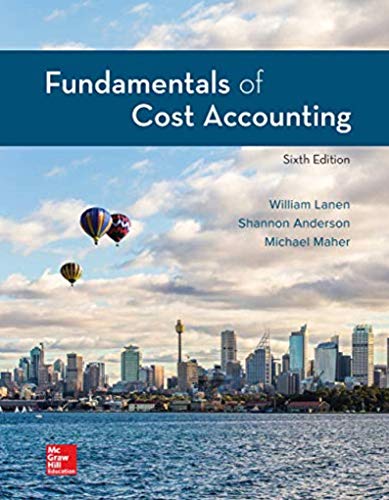
Estimated Net Realizable Value Method
Blasto, Inc., operates several mines. At one, a typical batch of ore run through the plant yields three products: lead, copper, and manganese. At the split-off point, the intermediate products cannot be sold without further processing. The lead from a typical batch sells for $40,000 after incurring additional
Required
Use the estimated net realizable value method to allocate the joint processing costs.
Want to see the full answer?
Check out a sample textbook solution
Chapter 11 Solutions
Fundamentals Of Cost Accounting (6th Edition)
- Audit, Fraud, Or Forensic Accounting Introduce yourself to your peers by sharing something unique about your background. Explain how you expect this course will help you move forward in your current or future career. This course covers forensic accounting, so it's important to establish the differences between an audit, a fraud examination, and a forensic accounting engagement. Think about the fraud conviction of Elizabeth Holmes, as described in the video, "Elizabeth Holmes Found Guilty in Theranos Fraud Trial." Then respond to the following: Imagine you are assigned to the Theranos case. Write the first five questions you would ask if you were an auditor, the first five questions as a fraud examiner, and the first five as a forensic accountant. After your questions, explain why the questions and approaches are different among the three roles. Be sure to respond to at least one of your classmates' posts.arrow_forwardFinancial Account subjectarrow_forwardACCOUNT QUESTIONSarrow_forward
- Provide answer general Accounting questionarrow_forwardDegregorio Corporation makes a product that uses a material with the following direct material standards: Standard quantity 2.7 kilos per unit Standard price $9 per kilo The company produced 5,700 units in November using 15,760 kilos of the material. During the month, the company purchased 17,830 kilos of direct material at a total cost of $156,904. The direct materials purchases variance is computed when the materials are purchased. The materials quantity variance for November is: a. $3,330 F b. $3,236 F c. $3,330 U d. $3,236 Uarrow_forwardNonearrow_forward
 Managerial AccountingAccountingISBN:9781337912020Author:Carl Warren, Ph.d. Cma William B. TaylerPublisher:South-Western College Pub
Managerial AccountingAccountingISBN:9781337912020Author:Carl Warren, Ph.d. Cma William B. TaylerPublisher:South-Western College Pub
